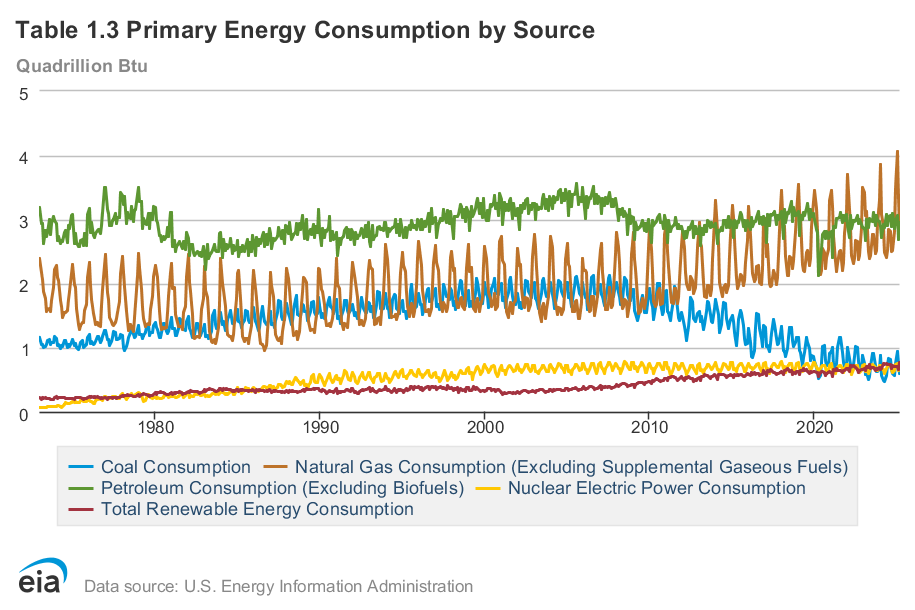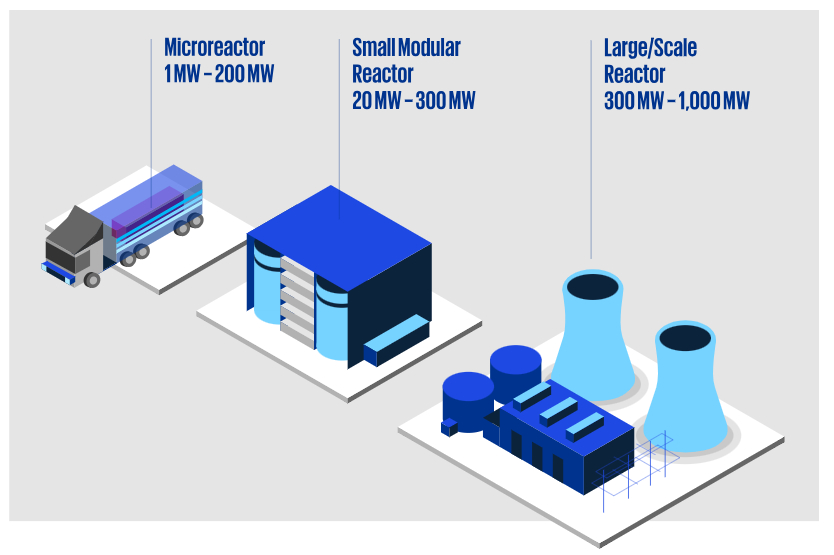- Trump prioritized fossil dominance, cutting environmental rules to boost oil, gas, and coal production.
- Biden’s strategy centers on renewables, with historic investment in clean energy and industrial resilience.
- Permitting remains a bottleneck, but both eras back nuclear energy for security and decarbonization.
- Global energy leadership shifted, from isolationism to climate-driven trade, tech, and foreign policy goals.
TradingKey - During the Trump administration, American energy policy undertook a vigorous swing towards fossil fuel dominance. Domestic oil, coal, and gas development for the goal of American energy independence was the administration's focus, lifting numerous environmental protections in the hopes of speeding up extraction and infrastructure. The Clean Power Plan was repealed. Methane emission standards rollbacks ensued. Offshore drilling was intensified. And the United States exited the Paris Climate Accord.
It wasn’t a secret plan. It was meant to turbocharge the fossil fuel economy of America by cutting red tape and ramping up production. Pipelines, refineries, fossil fuel leasing on publicly owned lands all received green lights. Renewables, while not directly in conflict, were largely on the sidelines, portrayed as an expensive distraction rather than an inevitable transformation.
Short-term results were exceptional.
Domestic oil production was at all-time highs. Natural gas exports soared. Energy prices decreased in the short-term, turning the U.S. into a net exporter of energy for a short period of time. But beneath the surface, the long-term cost was made manifest: stalled renewable momentum, eroding global leadership on climate change, and frozen green technology investment.

Source: www.eia.gov
Green Pivot: To the Renegotiation of the World Order
Unlike that previous period, the new U.S. energy plan isn’t marked by deregulation, however, but by reconceptualization. It no longer places fossil fuel at the center, but instead, the new U.S. package of policies sees the emergence of a low-carbon economy, powered by solar, wind, nuclear, energy storage, and electric transportation.
It is powered by landmark legislation. The 2022 Inflation Reduction Act delivers hundreds of billions of dollars of clean energy tax credits, manufacturing incentives, and deployment subsidies. The Bipartisan Infrastructure Law invests dollars in EV charging networks, modernizing the grid, and electrifying the transportation system of the country. Together, they are the most ambitious American energy investment package in history.
The result? Adoption of clean energy is occurring at a faster pace than anticipated. Renewables now provide more than 40% of global electricity generation in a matter of months. Wind and solar are not only cheaper, they’re often the lowest-priced new sources of power. And the U.S. is simultaneously growing its homegrown battery, EV, and solar manufacturing base in an effort to be less reliant on foreign supply chains.
.jpg)
Source: ember-energy.org
It’s no longer about reducing emissions. It’s about industrial strategy, economic competitiveness, and energy security. By reframing the clean economy as a national resource, reinforcing the economy, strengthening long-term resilience, supporting innovation, and creating employment, the agenda has become much broader.
Letting Politics and the struggle for Momentum Happen
One of the sharpest distinctions between the two eras is the manner in which energy infrastructure works its way through the approval process. Red tape was streamlined by the Trump administration for oil and gas infrastructure, side-stepping approval processes and circumventing environmental reviews. Renewables, on the other hand, had additional roadblocks, at least on public lands, where solar and wind projects were stalled or frozen completely.
Now, the game has reversed, though not entirely. Permitted delays keep the clean-energy sector upset, primarily for large solar and wind farms, transmission lines, and battery storages. Incidentally, even after the federal subsidies, the siting complexity, environment clearances, and local opposition result in delays in implementation.
Work has gotten underway to hasten the process, balancing speed with responsibility. The dilemma remains, however: how to get a new system up fast enough to meet climate and economic goals without repeating the shortcuts of the past.
Nuclear Power: The Unexpected Connection Between Two Worlds
There is one area of bipartisan resilience, however, namely nuclear power. Under Trump, the Trump administration viewed nuclear weapons as a strategic weapon. The plans involved rebooting the uranium mines, modernizing the regulatory system, and extending the life of currently working reactors. The new administration, if less keen on renewables, regards nuclear as central to net-zero goals.
It all depends on priorities. Current-day policy concentrates on the small modular reactor (SMR), the public-private nuclear R&D, and mainstreaming atomic in the clean baseload mix. It has less to do with refurbishing aged reactors, however, and much to do with reinventing the atom's future in a carbon-constrained world.
Though reasons are diverse, either energy security or climatic emergencies, both sides value the promise of nuclear energy. And that common opinion may be essential in view of spiking demand for zero-emitting, dispatchable power alongside intermittent renewables.

Source: drmcnatty.com
Global Positioning: From Retreat to Renewal
Energy policy doesn't work in a vacuum. Under Trump, the United States turned in no uncertain terms away from international climate cooperation, ceding leadership to the EU, China, and other blocs. Rollback of emission commitments, opting out of clean tech diplomacy, and fossil fuel exports all tinted a theme of isolation, not cooperation.
In comparison, the current policy landscape is intertwined with foreign strategy. Climate goals are enmeshed in trade agreements, supply chain agreements, and industrial arrangements. Clean energy isn’t local, it’s foreign. Whether through the vehicle of climate-focused trade agreements or international agreements to decarbonize the economy, energy policy has become an instrument of foreign geopolitics.
That matters. With the global clean economy on the rise, the planet will be led by the innovators, manufacturing, and technological leaders. America is currently playing catch-up, but the momentum has gained speed.
What Comes Next: Volatility or Long-term Resilience?
Energy policies of the Trump administration prized fast, visible achievements. Deregulation resulted in short-term benefits in terms of production, exports, and stock values. It, however, also brought volatility, fossil fuel reliance, and reduced investment in long-term infrastructure.
The shift to clean energy, by contrast, forfeits short-term certainty for long-term longevity. It occurs at a slower, perhaps steadier, larger scale, better-timed-for-future-needs speed. It creates new challenges: the permitting complexity, mineral dependency, reliability problems in the grid. But likely most of all, it has the potential to break free of the history of the boom-and-bust swings of the energy cycle.
Above all, they are not merely debates about policies, they are bets about investments. Tomorrow's energy paradigm will be the result of the intersection of new technology with existing infrastructure. Investors, voters, and industries will need to put their money in either another fossil revival, or the gradual, compounding momentum of transformation.
Final Thoughts
Energy doctrine in the Trump era was premised on fossil dominance, market liberalization, and American autonomy in hydrocarbons. Modern-day energy prospects largely depend on something other than that, on the environment, on innovation, on sustainable competitiveness. One has its merits; the other, however, follows the path that the world's energy markets are taking.
Clean energy isn't a "future play" anymore. It's a present-day reality, funded by capital, by policy, by will of the people. The discussion isn't whether the transition will take place, how fast, how efficiently. With the U.S. thinking about the future, the discussion isn't about energy abundance, or scarcity. It's about making the proper choice of abundance for the kind of world we are going to leave behind.


